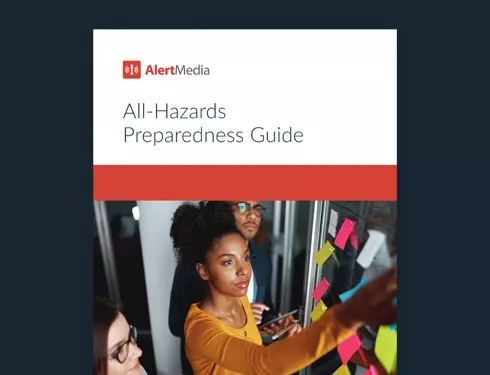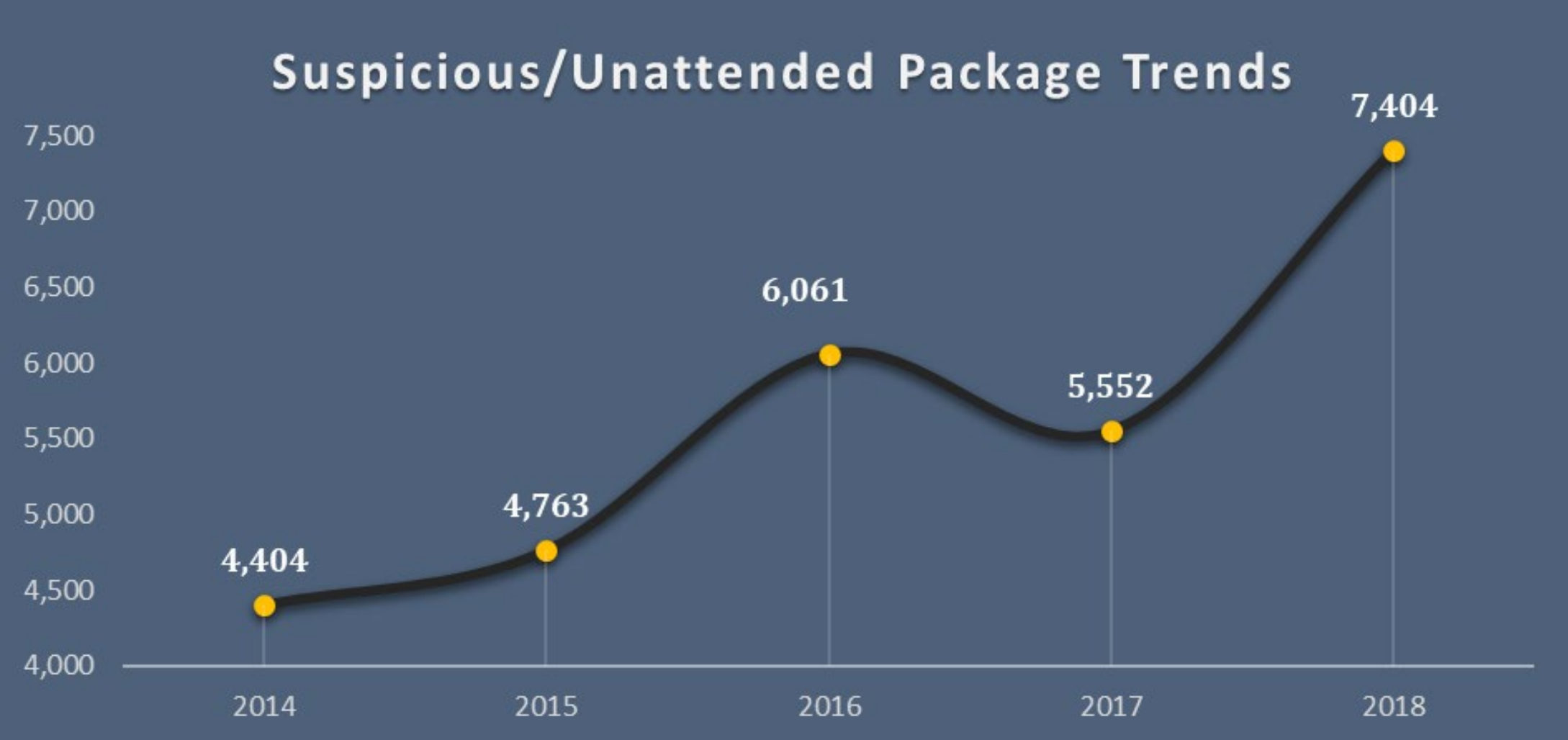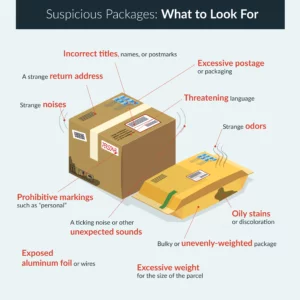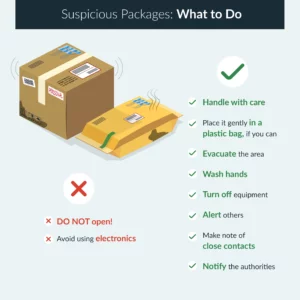
How to Handle Suspicious Package Threats
Suspicious packages can be frightening, but you’ll be prepared for them if you know what to look for and create your own response and communication plan.

At the height of the COVID-19 pandemic in 2020, Dr. Anthony Fauci, Director of the U.S. National Institute of Allergy and Infectious Diseases, opened a letter while sitting at his desk. As he tore open the envelope, a puff of white powder burst from the parcel and floated onto his face and mouth, causing a scare that stoked concerns over the health and safety of the country’s top doctor. Thankfully, the white powder was tested and deemed harmless, but Dr. Fauci himself noted that if that powder was indeed a poison such as ricin, he would almost certainly have been killed.
The above scenario is but one of the multitude of ways by which suspicious packages can threaten your business and people. For those of us in Austin, Texas, memories of the 2018 serial package bombing spree are still fresh, and many residents remain apprehensive about opening unexpected mail after experiencing a prolonged public safety crisis. While instances of dangerous mail such as poisoned letters and mail bombs are extremely rare, their frequency has been on the rise in recent years, according to one ATF report.
Download Our All Hazards Preparedness Guide
 Source: https://www.atf.gov/file/136971/download
Source: https://www.atf.gov/file/136971/downloadIt’s important for businesses to fully understand the danger that suspicious packages pose, and to learn the most effective strategies to mitigate or avoid it. In this post, we’ll cover what you need to know and how a modern emergency communication solution can help you keep people safe when an unexpected threat arrives at your doorstep.
What Is a Suspicious Package?
A suspicious package broadly refers to any unexpected delivery that might be meant to cause harm to its recipients. Generally, suspicious packages are those sent by a bad actor in the hopes of terrorizing, harming, or even killing the package’s addressee. These can take a variety of forms depending on the harmful mechanism employed:
- Explosives: A bomb or other explosive device that is packaged and sent to a target. It’s meant to detonate when opened or handled.
- Toxic chemicals: Packages containing chemical attacks such as anthrax, ricin, or cyanide are meant to expose the target to the harmful chemical. These often present as powdery substances.
- Biohazards: Used needles, bodily fluids, or other harmful, but not necessarily toxic, substances that are meant to unsettle or infect the target.
- Sharp objects: A simple attack meant to lacerate a package’s recipient using razor blades, broken glass, or other sharp-edged objects.
While the mechanism employed can vary depending on the suspicious mail in question, their motivations are often similar. A wide range of personal and cultural issues have driven individuals to send harmful packages to public figures such as TV hosts, political figures, academics, and religious leaders and others in the spotlight. And in all cases, the package is designed so that it can evade detection on the way to its mark. Attackers try to smuggle their harmful parcels into the hands of targets by relying on the fact that most people aren’t too wary of their mail.
While it can be incredibly scary to consider dangerous threats arriving via such mundane and familiar infrastructure such as the postal service, there are a few simple things you can do to make sure that your company is prepared to encounter potentially dangerous mail.
How to Handle a Suspicious Package
Package bombs, poisonings, and other attacks are nothing new, and organizations like the ATF and FBI report on such events regularly. Through the work of these organizations—and others like them—we have put together a step-by-step plan to make sure that your organization is resilient against the threat of suspicious packages.
What to look for
Due to the nature of suspicious packages, they often don’t look like official or expected mail. For example, keep an eye out for misspellings or distorted handwriting on labeling, which indicate unfamiliarity with the subject. There might not be a return address, an indicator that the sender doesn’t want to be identified or doesn’t expect the package to be returned. Sometimes, even the way in which the parcel is packaged (if done sloppily or with excessive tape, for example) can indicate that something is wrong with that piece of mail.

Other signs that can help identify dangerous packages are:
- Oily stains or discoloration
- Strange odors
- Exposed aluminum foil or wires
- A rigid, bulky, or unevenly-weighted package
- Excessive weight for the size of the parcel
- A ticking noise or other unexpected sounds
- Restrictive markings like “Personal,” or “Do not X-ray”
meant to discourage further investigation - Incorrect titles, names, or postmark
- A strange return address
- Threatening language
- Excessive postage or packaging
Knowing these signs is vital to protecting you and your people from suspicious packages. If you or any of your people encounter any such characteristics, it’s crucial to have a plan in place to make sure that everyone stays safe.
What to do when you encounter a suspicious package

If you or anyone at your business is suspicious of a package, here’s what experts recommend:
- Handle with care—Place the package in a plastic bag to contain it.
DO NOT open the package! Handle it as gently as possible. - Avoid using electronics—Do not use cell phones or other
electronics near the package. - Evacuate the area—Evacuate everyone from the room in which you’re keeping the package, suspicious letter, or delivery. Leave the room and close the door.
- Turn off equipment—Shut down all equipment and HVAC systems in the immediate area to limit the spread of any hazardous substances.
- Alert others—Alert anyone at risk of the package threat and inform them of buildings and workspaces to avoid.
- Make note of close contacts—Take note of everyone who came into contact with the package. Keep this list handy for emergency responders.
- Wash your hands and avoid touching your face to prevent any contaminating substances from reaching your eyes.
- Notify your organization’s safety and facilities leaders as well as the police department.
These precautions are general guidelines, but it’s important to update your emergency preparedness plans and create a procedure that is more specifically catered to your business in order to respond effectively. Below, we’ll cover how to do so.
Creating a Suspicious Package Plan for Your Business
Brainstorm with your team
If a suspicious package finds its way to your door or desk, you need to have a plan already in place that will give you actionable guidance. In order to personalize your response, you should have stakeholders from your team put their heads together so that all potential risk factors are covered. Ask them what kind of qualities might indicate a suspicious package for your specific business. Consider anyone who might be motivated to send hazardous mail, or specific risk factors such as recent events that have put your company in the spotlight. Develop procedures with an all-hazards approach to ensure you’re covering all of your bases and able to respond to any kind of threat. All of these steps will help you create an emergency response plan unique to your business and the threats in question. Be sure to include expert third-party advice such as that from the Homeland Security and Emergency Management Agency to cover all of your bases.
Document and communicate your protocol
Once you and your team have created an emergency response plan, it’s time to codify it. Identify the expected risk factors of a suspicious package situation and make sure that each of them has a corresponding response or solution and a person whose responsibility it is to manage each response. Once you have all of that information gathered in one emergency communication plan, ensure organization-wide adoption and accessibility. Even if you have the greatest plan ever made, it’s useless if your people don’t know about it. Only when you have successfully engaged all of your employees in the watch for dangerous packages will your plan be successful.
If your organization employs a mass notification system, this can be easily accomplished in just a few steps. If you do so, make sure that your employee contact information is current so that nobody is left unaware of your plans.
Run drills
And finally, once you have your plan in place and everyone knows what’s expected of them, it’s time to put everything to the test. Run drills and tabletop exercises to familiarize everyone with the plan, and be vigilant in identifying ways in which the drill or exercise exposed errors or gaps in said plan. Use these experiences to find out what works well and what needs improving, and to give everyone a chance to ask questions and learn in a low-stress environment.
Conclusion
While suspicious packages are more likely to show up in spy thrillers than at your place of business, as with any potential threat it’s important that your company isn’t caught unprepared should such a situation occur. Know the signs to look for, create a solid plan, and disseminate your plan properly—and your organization will be much more resistant to suspicious package attacks and more able to respond to them should they occur.




